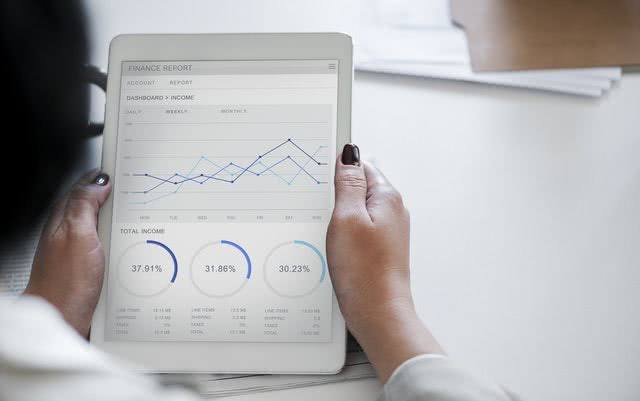What is Electronic Data Processing
Electronic data processing, also known as EDP, is a frequently used term for automatic information processing. It uses the computers to manipulate, record, classification and to summarize data. If someone asks what is electronic data processing, then EPD meaning can be described as the processing of data using electronic means such as computers, calculators, servers and other similar electronic equipment. A computer is the best example of an electronic data processing machine. Electronic data processing is an accurate and rapid method of data processing.
Methods of Electronic Data Processing (EDP)
There are various methods of data processing but there are some very popular methods when it comes to “electronic data processing”. These methods are widely adopted in almost every industry. Depending on the nature of requirement of data processing, some of the most popular methods of electronic data processing are explained below:
- Time-sharing
- Real-time processing
- Online processing
- Multiprocessing
- Multitasking
- Interactive processing
- Batch processing
- Distributed processing
Each type is described below in brief:

Related: Data Processing | Meaning, Definition, Steps, Types and Methods
Time- Sharing: In this processing method, many nodes connected to a CPU accessed central computer. A multi-user processing system controls the time allocation to each user. Each user can allocate the time slice in a sequence of the Central Processing Unit. The user should complete the task during the assigned time slice. If the user cannot finish the task, then the user can complete the task during another allocated time slice.
Real-Time Processing: Providing accurate and up-to-date information is the primary aim of real-time processing. It is possible when the computer process the incoming data. It will give the immediate response what may happen. It would affect the upcoming events. Making a reservation for train and airline seats are the best example for real-time processing.
If the seats are reserved, then the reservation system updates the reservation file. The real-time processing is almost an immediate process to get the output of the information. This method saves the maximum time for getting output.
Online Processing: In this processing method, the data is processed instantly it is received. A communication link helps to connect the computer to the data input unit directly. The data input may include a network terminal or online input device. Online processing is mostly used for information research and recording.
Multiprocessing: Multiprocessing is processing of more than one task that uses the different processors at the same time of the same computer. It is possible in network servers and mainframes. In this process, a computer may consist of more than one independent CPU. This makes data processing much faster.
There is a possibility to made coordination in a multiprocessing system. In this process, the different processors share the same memory. The processor gets the information from a different part of one program or various programs.
Multitasking: It is an essential feature of data processing. Working with different processors at the same time is called multitasking. In this process, the various tasks share the same processing resource. The operating systems in the multitasking process are time-sharing systems.
Interactive Processing: This method includes three types of functions. The following are the types of function
- Peak detection
- Integration
- Quantitation
It is a simple way to work with the computer. This method of the process can compete for each other.
Batch Processing: Batch processing is a method of the process the organized data into divided groups. In this method, the processing data can be divided as a group over a required time period. The batch processing method allows the computer to perform different priorities for an interaction. This method is very unique and useful to process.
Distributed Processing: This method is usually used for remote workstations, since the remote workstations are connected to a big workstation. The customers get the better services from this process. In this process, the firms can distribute the use of geographical computers. The best example for this distributed processing method is ATMs. ATMs are connected to the banking system.
Elements of Electronic Data Processing
Hardware, Software, procedure, personnel is the basic elements of electronic data processing. In the hardware section, scanners, barcode scanners, cash registers, personal computers, medical device, servers, video and audio equipment are the elements of electronic data processing. In the software section, accounting software, data entry, scheduling software, analytics, and software are the elements of electronic data processing. In the procedure section, sorting, analysis, reporting, conversion, data collection, aggregation be the elements of EDP.
In personnel, the programmer uses the electronic data processing to create the components and spreadsheets. The data entry specialists use to scan the barcodes. The importance of data processing is now understood by all the fields. Each industry now focuses on what works best for them and how to achieve greater profits.

Stages of Electronic Data Processing
A collection is the first stage of electronic data processing. It is a very crucial part. In an EDP system, this process ensures that accurate data gathering. Census, sample survey, and administrative by-product are some types of data collection. Preparation is the second stage of electronic data processing. Preparation is used to analyze the data processing.
Input is the third stage in electronic data processing. Data entry is done by the use of a scanner, keyboard, and digitizer. The fourth stage is processing. It has various methods. The last stage is storage. Every computer has the use to store the file.
Advantages of Electronic Data Processing
- The system of electronic data processing is once created then the cost of the managing data will be reduced. Documents can be protected as an extreme data sensitive. Because of the documents should be treated as a primary asset. When all the information is collected by the papers are the challenging one.
- The management of document is costly. So, electronic data processing reduces the cost of the paperwork. The electronic data processing provides the documentation controls. With the help of electronic data processing, you can easily automate the PDF publishing process.
- In electronic data processing, there is a facility to search a document in the system. It will reduce the time loss. The electronic data processing has the benefit to improve the internal and external collaboration. The electronic data processing helps to improve the better submissions. The electronic data processing also fast up the complete structure to make the generation of documents.
- The famous software product such as Ms. Office is using the electronic data processing concept. The EDP has the facility to reduce the duplication of effort and repeated entries. The EDP has the capability to make the decisions. An electronic data processing has the ability to store the enormous amounts of data and this data can then be further utilised for data presentation and analysis.
Disadvantages of Electronic Data Processing
- When the computer hackers make the strike on the computer, then the processing of data will make the insecurity. Then the data will be the loss. The fault in a equipment will harm all the equipment in the office. The security of the computer would be the big problem. In a coding process, a computer not recognizes the same individuals.
- When a small number of digit codes are compared with a large number code then, it occupies the computer storage less. The alphabetic codes can be descriptive.
Examples of EDP: It is used in a telecom company to format bills and to calculate the usage-based charges. In schools, they use EDP to maintain student records. In supermarkets, used for recording whereas hospitals use it to monitor the progress of patients.
Further, the electronic data processing is used for hotel reservations. It can be used in learning institutions. The EDP is also used in banks to monitor the transactions. In the departments such as police, cybercrime, and chemical the electronic data processing is used to note the entries. It enables larger organizations to collect the information and process the data. The electronic data processing can also be used as video and audio equipment. It can be used as a barcode scanner.
Also Read: Data Processing & Data Processing Methods